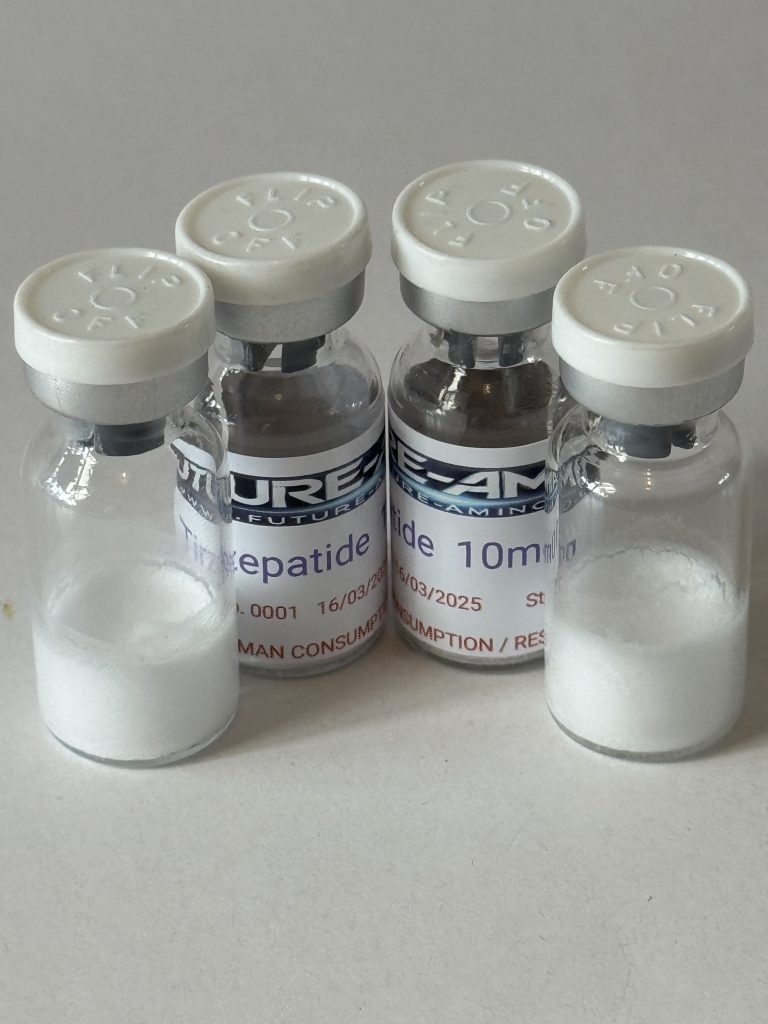Peptides. Your No1 guide. What they are and how they work. Trusted reseach backed Information
Are peptides natural?
Yes. Peptides occur naturally in the body and in protein-rich foods. They can also be made synthetically for supplements or medicine.
Are peptides safe?
When sourced from reputable suppliers, peptides can be safe. Always research quality and consult a professional if unsure.
Do peptides really work?
Studies suggest peptides support recovery, hormone balance, and skin health, but results depend on type and usage.
Why are peptides popular in fitness?
Because peptides may speed up muscle recovery, help fat loss, and improve overall performance when combined with training.
Peptides: What They Are and How They Work
Peptides are short chains of amino acids linked by peptide bonds. They sit between single amino acids and full proteins in size—typically from 2 up to around 50 amino acids. Because they are smaller than most proteins, peptides can be highly specific “messengers” in the body, helping cells communicate and coordinate everyday functions.
What peptides do:
- Signalling: Many hormones and messenger molecules are peptides that tell cells when to start or stop certain processes.
- Repair & turnover: Some peptides are involved in tissue maintenance, supporting normal renewal of skin, muscle, and connective tissue.
- Transport & defence: Others help move substances around the body or form part of the immune response.
How they work: Peptides typically bind to receptors on the surface of a cell—think “key meets lock.” That binding triggers a cascade of signals inside the cell (second-messenger pathways), which can alter enzyme activity, gene expression, or the release of other messengers. Because a peptide’s sequence and length define its shape, each peptide tends to fit only certain receptors. This is why peptides can act with precision and relatively low “noise” elsewhere.
Where they come from: Your body naturally makes peptides by reading DNA instructions and stitching amino acids together. Food proteins are also broken down into smaller peptide fragments during digestion. In labs, peptides can be made synthetically with high purity to study specific sequences and their effects.
Key takeaways: peptides are targeted messengers built from amino acids; they work by docking with cell receptors and triggering precise responses; and their size and sequence give them the specificity that makes them useful to study across biology, exercise, skin health, and more.
Peptides: Questions & Answers
What are peptides, in simple terms?
Peptides are short chains of amino acids (usually 2–50) linked by peptide bonds. They sit between single amino acids and full proteins in size. Because of their small size and specific sequences, many peptides act as precise “messengers” that help cells coordinate everyday functions like metabolism, tissue repair, hormone signalling, and immune responses.
How are peptides different from proteins and amino acids?
Amino acids are the basic building blocks. Peptides are short chains of those blocks. Proteins are longer, more complex chains that fold into intricate shapes. In practice, peptides tend to act more like targeted signals, while proteins often serve as structural components or large enzymes. The shorter length of peptides lets them interact with cell receptors in a very specific way.
How do peptides work in the body?
Most peptides work by binding to a receptor on a cell’s surface—like a key fitting a lock. That contact triggers a cascade of chemical signals inside the cell (second messengers) that can influence enzyme activity, gene expression, or the release of other signalling molecules. Because shape matters, a peptide’s exact sequence determines which receptor it fits and what response it triggers.
Where do peptides come from?
Your body naturally makes peptides as it builds and renews tissues. Food proteins are also broken down into peptide fragments during digestion. In research settings, peptides can be synthesised with high purity to study specific sequences and their functions. Cosmetic and nutrition products may also include peptide ingredients intended to support skin appearance or general wellbeing.
Why are peptides popular in health and fitness conversations?
Peptides are discussed because certain sequences are linked—by studies or growing interest—to areas like tissue recovery, skin appearance (collagen support), metabolic signalling, sleep quality, or cognitive function. The key idea is targeted signalling: rather than acting broadly, many peptides engage a narrow pathway that may support specific outcomes when combined with good sleep, nutrition, and training.
Are peptides medicines? What about legality in the UK?
Most peptides discussed online are not licensed medicines in the UK. They’re typically positioned for research, cosmetic, or nutritional contexts depending on the product and claim. Always check UK regulations, product labelling, and intended use. Nothing here is medical advice; speak to a qualified professional for diagnosis or treatment questions.
How do I evaluate quality and sourcing?
Look for transparent documentation: third-party lab reports (identity/purity), batch numbers, and clear handling instructions. Reputable suppliers provide consistent packaging, storage guidance, and responsive support. Be wary of exaggerated claims, vague origins, or pricing that seems too good to be true—quality control matters with peptide ingredients.
Are there risks or side effects?
Any bioactive ingredient can carry risks, especially if used inappropriately or sourced poorly. Responses vary by individual and context. Research the specific peptide, review credible sources, and consider speaking with a healthcare professional—particularly if you have medical conditions, take medications, or are pregnant or breastfeeding.
How should peptides be stored and handled?
Follow the label: most peptide ingredients prefer cool, dry, light-protected storage. If a product is supplied in powder form, keep lids sealed and avoid moisture. If reconstitution is part of a research protocol, use appropriate technique and hygiene. Discard products that show signs of damage or contamination.
Bottom line: what’s the smartest way to think about peptides?
Treat peptides as targeted tools, not magic fixes. Their best results show up when the basics are dialled in: sleep, protein intake, micronutrients, hydration, and sensible training or skincare. Start with reputable information, prioritise quality, and keep expectations realistic. Consistency beats intensity—and fundamentals amplify any targeted strategy.
Most people have heard the term peptides in passing, but the practical meaning is simple: they are short chains built from amino acids, arranged in specific sequences that let them act like tiny instructions for living systems. Because these chains are compact, they can move quickly, bind precisely to cell-surface “locks,” and trigger targeted responses without disturbing everything else. Think of them as concise notes passed between cells: short, specific, and fast to act. Their size sits between single amino acids and full-blown proteins, which is why they often feel more like messengers than machinery. The body makes countless varieties naturally, and modern labs can create exact sequences on demand to study how structure maps to function.
A useful way to understand these short chains is to split the discussion into form, function, and context. Form covers the recipe—how many amino acids, which ones, and in what order. Function covers the cellular effect—what receptor gets engaged, which pathways light up, and how the downstream cascade changes metabolism, growth, repair, or signalling. Context covers the bigger picture—nutrition, sleep, training load, stress, age, and environment. The same molecule can produce noticeably different outcomes depending on that context, which is why broad claims often fail and careful observation wins. In practice, form sets potential, function sets direction, and context decides the magnitude.
At the cell surface, receptors are shaped to recognise specific three-dimensional patterns. Short amino-acid chains present exactly those patterns. When a chain binds, it nudges the receptor into a new conformation, which flips intracellular switches: second messengers rise or fall, enzymes turn on or off, and transcription factors move to or from the nucleus. The result might be increased glucose uptake in one tissue, improved collagen turnover in another, or a shift in appetite signalling somewhere else. Because the binding is selective, these messages can be highly local in effect even if they travel widely through the body.
The body builds these chains the same way it builds large proteins—by reading genetic instructions and linking amino acids one after another. Food proteins are also digested into smaller fragments, some of which retain biological activity. In the lab, solid-phase synthesis allows precise assembly: amino acids are added stepwise to a growing chain anchored on an inert resin, protected groups are added and removed in a controlled rhythm, and the finished sequence is cleaved, purified, and checked by analytic tools like HPLC and mass spectrometry. That combination—precision assembly and rigorous verification—is what gives research-grade material its consistency.
Purity and identity matter. Two samples with the same name can behave differently if one contains truncated fragments, side products, or incorrect stereochemistry. That is why quality documentation—chromatograms, mass spectra, batch numbers, and storage guidance—isn’t “nice to have,” it is essential. Temperature cycles, moisture ingress, and light exposure can break delicate bonds or encourage aggregation, dulling activity. Good packaging and sensible handling preserve the intended structure long enough for a fair experiment. In short: clean inputs make clean conclusions, and sloppy inputs hide the signal in noise.
Even the most elegant sequence won’t help if the broader routine is broken. Real-world outcomes depend on basics: protein intake, micronutrients, sleep depth and duration, hydration, and a training plan that alternates stress with recovery. A smart plan starts with those foundations and only then layers targeted tools. That way, any measured change can be linked credibly to the variable under study rather than to an obvious gap—like chronic sleep debt or wildly inconsistent loading—sitting in the background.
Timing and dosage in research contexts are not just numbers; they are design choices. Short chains often act quickly and clear quickly, so frequency can matter as much as amount. Some effects appear best with steady, modest exposure; others benefit from pulses that mirror natural rhythms. Documentation is the friend of anyone seeking clarity: note training volume, subjective soreness, joint behaviour under load, morning resting heart rate, and sleep quality. Over a few weeks those notes will show a pattern that either supports or contradicts the working hypothesis.
It’s also helpful to understand how different tissues respond. Connective tissues remodel slowly; muscle adapts faster; skin sits somewhere in between; and the nervous system has its own rules entirely. If a sequence is meant to influence connective-tissue turnover, the relevant timeline is measured in weeks to months, not days. Patience is part of the design. Trying to compress a slow process with an aggressive schedule usually backfires by adding stress without offering time to rebuild. Intelligent pacing—progressive load, strategic deloads, and honest recovery—turns subtle molecular nudges into visible functional gains.
Safety and compliance sit over everything. Many short-chain materials discussed online are not licensed medicines; they live in research, cosmetic, or nutrition categories with different constraints and allowable claims. That means the right mindset is conservative: avoid medical promises, respect local laws, and treat any plan as an experiment with clear boundaries. People who approach the field with humility—testing ideas, not beliefs—tend to avoid both overreach and disappointment. When in doubt, qualified professional guidance beats guesswork every time.
Communication strategy matters if you run a public-facing project. Clear, educational content builds trust; aggressive sales language erodes it. Cite reputable sources when you can (journals, established medical portals, official guidelines). Keep visuals clean and respectful. Avoid imagery or phrasing that triggers platform filters or misinterpretation. Over the long run, consistent information hygiene does more for credibility—and for search performance—than any individual growth hack.
If there is one unifying principle, it is this: specific structure enables specific action, but the organism decides the outcome. Short amino-acid chains can open doors, not force the room to change. Feed the system, rest the system, stress the system intelligently, and the doors lead somewhere useful. Under those conditions, the term peptides stops being a buzzword and becomes a shorthand for precise biological messages—brief notes written in the alphabet of amino acids, delivered to the right address, at the right time, for the right reason.
The word peptides describes chains of amino acids that are smaller than full proteins yet far more active than single amino acids. Because of their size, they slip through barriers and engage with receptors like keys fitting locks. They play roles in signalling growth, repair, metabolism, immunity, and many other processes. The attraction for scientists is simple: these chains allow fine-tuned study of how specific sequences affect living systems. Each chain is a natural experiment in structure and function.
Imagine the body as a network of conversations. Hormones and proteins are long speeches; small molecules are quick whispers; peptides sit in between, offering concise instructions that can be heard clearly without overwhelming the system. They act with more specificity than blunt nutritional inputs, yet with less permanence than genomic changes. That balance makes them powerful candidates for controlled research on how micro-signals shift macro outcomes.
From a biochemical perspective, each peptide is defined by its sequence of amino acids. Replace one residue, and you alter the shape, polarity, or binding affinity. That small difference can completely change the effect: stimulating growth in one context, suppressing inflammation in another, or doing nothing at all. The “code” is highly sensitive, which is why precision in synthesis is so important. In laboratories, automated solid-phase synthesis assembles these molecules step by step, then quality checks confirm whether the final product matches the intended blueprint.
In terms of function, peptides are like switches on the control panel of biology. They can trigger or dampen enzyme activity, change how cells communicate, adjust immune tone, or regulate appetite signals. They are not miracle solutions; they are finely tuned tools. Their effectiveness depends on environment: nutrition quality, sleep depth, training cycles, stress load, and recovery all influence outcomes. Without strong foundations, the signal gets lost in noise. With strong foundations, the same signal can push adaptation forward.
Research shows that context defines outcome. For example, connective tissue adapts slowly, so any chain meant to influence collagen turnover requires patience over weeks to months. Muscles adapt faster, showing shifts in protein balance within days. Nervous tissue obeys a different rhythm entirely, often needing cautious, gradual influence. Recognising those timelines prevents unrealistic expectations and reduces the temptation to overshoot. The body is not a machine you can reprogram instantly; it is a living system with evolutionary limits.
Purity standards and handling methods matter. Impurities can mimic signals or block them. Storage errors—light exposure, repeated thawing, or moisture—can break bonds and ruin activity. This is why responsible research involves documentation, lot numbers, and proper chain of custody. Without them, the results are not trustworthy. Science progresses by eliminating doubt, and sloppy sourcing creates doubt before the experiment even begins.
In communication and education, the language around peptides should be careful. Over-promising, or crossing regulatory boundaries, risks credibility. A stronger long-term strategy is to explain mechanisms, describe observed patterns, and point to peer-reviewed references. That builds audience trust and satisfies search algorithms, which reward clarity and consistency. Clean educational content outlives hype every time.
A sensible guiding rule is: measure, adjust, respect limits. Document baseline status, introduce one variable at a time, and track outcomes with objectivity. Keep recovery, nutrition, and lifestyle as the base layer, and let peptides function as investigative tools rather than shortcuts. In that framing, they deliver insight instead of illusion, clarity instead of confusion.
Ultimately, peptides are not magic—just information, written in amino acid code. They show how small structures carry precise meaning inside biology. Used with patience, quality, and context, they transform from buzzwords into reliable tools for understanding the most detailed conversations happening inside cells every second of life.


